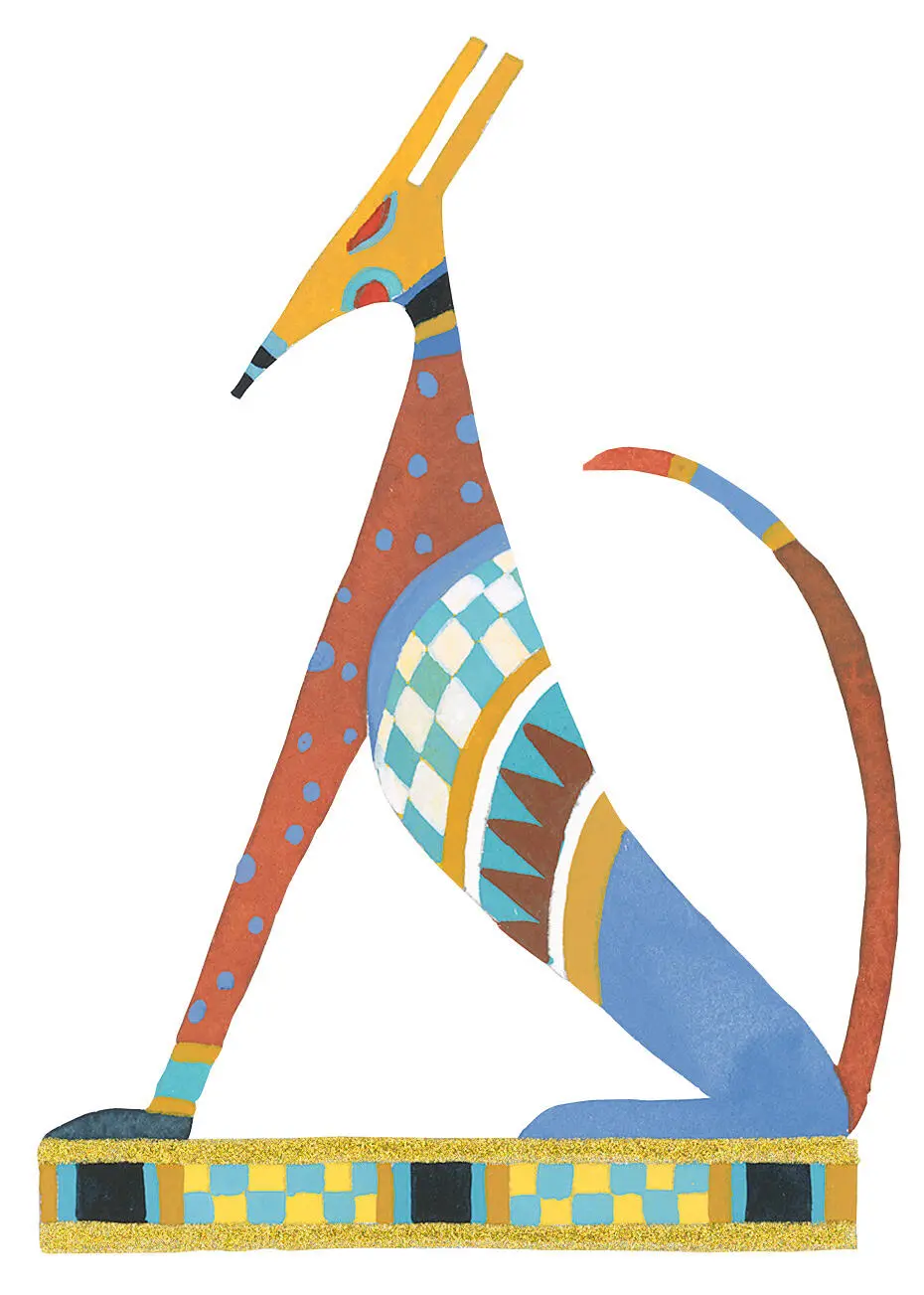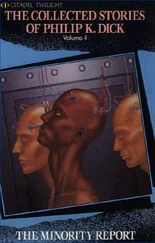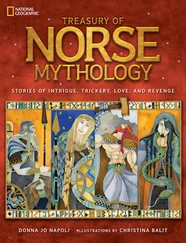Christina Balit - Treasury of Egyptian Mythology - Classic Stories of Gods, Goddesses, Monsters & Mortals
Здесь есть возможность читать онлайн «Christina Balit - Treasury of Egyptian Mythology - Classic Stories of Gods, Goddesses, Monsters & Mortals» — ознакомительный отрывок электронной книги совершенно бесплатно, а после прочтения отрывка купить полную версию. В некоторых случаях можно слушать аудио, скачать через торрент в формате fb2 и присутствует краткое содержание. Жанр: unrecognised, на английском языке. Описание произведения, (предисловие) а так же отзывы посетителей доступны на портале библиотеки ЛибКат.
- Название:Treasury of Egyptian Mythology: Classic Stories of Gods, Goddesses, Monsters & Mortals
- Автор:
- Жанр:
- Год:неизвестен
- ISBN:нет данных
- Рейтинг книги:3 / 5. Голосов: 1
-
Избранное:Добавить в избранное
- Отзывы:
-
Ваша оценка:
- 60
- 1
- 2
- 3
- 4
- 5
Treasury of Egyptian Mythology: Classic Stories of Gods, Goddesses, Monsters & Mortals: краткое содержание, описание и аннотация
Предлагаем к чтению аннотацию, описание, краткое содержание или предисловие (зависит от того, что написал сам автор книги «Treasury of Egyptian Mythology: Classic Stories of Gods, Goddesses, Monsters & Mortals»). Если вы не нашли необходимую информацию о книге — напишите в комментариях, мы постараемся отыскать её.
Treasury of Egyptian Mythology: Classic Stories of Gods, Goddesses, Monsters & Mortals — читать онлайн ознакомительный отрывок
Ниже представлен текст книги, разбитый по страницам. Система сохранения места последней прочитанной страницы, позволяет с удобством читать онлайн бесплатно книгу «Treasury of Egyptian Mythology: Classic Stories of Gods, Goddesses, Monsters & Mortals», без необходимости каждый раз заново искать на чём Вы остановились. Поставьте закладку, и сможете в любой момент перейти на страницу, на которой закончили чтение.
Интервал:
Закладка:
Hut Heru was grace itself, enriching the world with the joys of the senses. She was dance and music, inextricably intertwined, and decoratively beautiful, night and day.
That pleasure excited Ra into an even more heated frenzy of
creativity that needed to live up to the cleverness of the number nine. The molten flow that had emerged from the watery Nun with Ra’s first words still sizzled. It now inspired Ra. With flame coming from his pointing finger he made the basic elements to build all things. He started with iron and blew it over this rapidly forming ball of a world. It glittered golden. A royal satisfaction enveloped Ra; this was fated to be his color, the rightful color of the father of everything and everyone.But the world needed more colors. Another jab of Ra’s fire fingertip scattered red lithium to the winds. Next calcium burned bright orange. Then sodium flamed yellow, copper sparkled green, selenium glowed blue,
cesium flashed indigo, potassium gave violet luster.The luminosity of colors seduced Ra’s new eye to step forward as a goddess, and she called herself Hut Heru. She danced over the earth, on which the iron had now cooled into a crust, and laughed, filling the cosmos with music. The twirling of her skirts swished the remaining gassy colors high. When the sun god Ra shone his light through the moisture goddess Tefnut, a rainbow arched across the world, echoing the arched body of Nut, the daughter of Tefnut and Shu.Hut Heru didn’t always dance, though. She loved night. She lay back in those hours and gazed upward into nothingness. So she wanted calming colors for those quiet times. Ra knew this, of course, for Hut Heru was his very eye. With a scorching finger, he made the silver of aluminum. From it the stars and moon formed, and Hut Heru was glad and grateful.Now there were nine colors. Nine again. Luscious nine.
Ra shrugged and a cloud of
insects filled the air in all imaginable colors. He loved scarabs best. They rolled dung into balls and laid their eggs inside, so the little balls emitted heat as the dung decayed. Later, when the eggs hatched, it seemed like spontaneous generation—like the self-generation of the royal Ra. What charming creatures! Ra took to assuming scarab form and calling himself Ra-Khepra in the morning, when he was just a babe pushing the sun up into the sky. From then on the scarab was sacred before all other creatures.But the insects swarmed, far too many, plaguing the Pesedjet of deities. So the
tongue of Ra stepped forward, as the god Tehuti, and with ever-powerful words he created birds to eat them. Clever Ra was wiser now about the ways of life, so he didn’t stop there; he made Tehuti speak again, and now some birds preyed upon others, to keep the pop-ulations of both insects and birds under control. The master predator and most intelligent was the falcon, and so Ra declared it his bird. Ra often assumed the head of a falcon, particularly in midday at the sun’s zenith. In that form he called himself Ra-Herakhty.The
falcons were such skillful hunters, they would soon have eaten up all the smaller birds except for the fact that th ey had the snakes to prey upon, as well. Perfect.There was a whole world to fill, and Ra did it all. Just a blink, a shrug, a chin flick, and wings flapped, feet scurried, bodies wriggled.
And those snakes—good glory, what killers the
cobras were! Their tongues picked up the faintest smells and the pits behind their nostrils were so sensitive to heat that they could hunt even at night. Ra had been brilliant to add the sacred iaret to his headdress.Through words, Ra created little creatures of land and sea and air. Then medium-size ones. Then enormous ones. He created plants and mushrooms. He created rocks and metals and gases. And it was all so painfully beautiful.
Ra gazed at the world through his
new eye Hut Heru, wearing his sacred iaret, and the complexity impressed him—the deities, the plants, the beasts, the humans. But somehow those humans kept worrying him. They were cunning in a different way from the beasts. Ra had the terrible sense that he had known those humans would bring trouble, that he had willfully played his part. This was how it had to be. And just as strongly he felt all creation was teetering, close to going out of control.Set: The god Set appeared as a mix of parts from different animals: aardvark, jackal, donkey. Over time, he came to be viewed as increasingly evil. Perhaps this conglomeration reflects the lack of peace within him.


SET (SETH)
Envious God
The goddess
Aset, great-granddaughter of Ra, was beautiful in every way. Humans gravitated toward her naturally. She listened to the worries, hopes, dreams of everyone, from the richest to the slaves. She listened to those who were abused and even to their abusers. And by listening, she helped them understand their own thoughts and find their own paths to solving their troubles or fulfilling their dreams. In a sense, it was through Aset’s faithful and careful listening that human beings really learned to trust in the deities. She wished strength and health for all of them; she wished good life. And so she wore the tjet, a girdle with a knot at the front, and carried in one hand the ankh, a small straight key with two straight arms and a loop on top. Both the tjet and the ankh were symbols of life. In her other hand she often held a simple wooden staff.That wooden staff was useful when she walked with her brother-husband Usir in the fields. Usir loved to wander among the
animals, particularly the animals that humans quickly gathered around them. And even more particularly those fat woolly sheep with the wide-set eyes that made that little baaa baaa noise Aset found so pleasing. In fact, Usir was so fond of sheep, he wore ram horns on his crown. He was a benevolent god, bringing robustness to the sheep and fertility to the land. He taught humans to plow and he gave them laws to live by, rising to become king of Lower Egypt and then, so popular was he, king of all Egypt. And so it was impossible for this benevolent god not to love his ever-so-benevolent wife Aset. He adored her. They were meant for each other.Their brother god
Set watched them gaze at each other, this Aset and this Usir, eavesdropping on their fond murmurings. He could smell how they changed when they approached each other. Usir grew musky, like a young ram; his muscles rippled under his skin. Aset became as fragrant as those water flowers she picked so often, those blue lotuses. She grew intoxicating, as though her very essence was lotus oil.Set had a sister-wife of his own—what was her name? Ah, yes, Nebet Hut. But Set couldn’t think about her. He couldn’t even look at her. He looked instead at Aset.
THE LOTUS: God Scent
Ancient Egypt had both white and blue lotuses, and from both an oil can be extracted that is pungently sweet to smell. People used the flowers as decoration and women used the essence of the lotus as perfume. Egyptian perfumes have been famous from ancient times through modern times. But the blue lotus also has a high plant nutrient content, so this flower may have been used by the ancients in medicines for its healing properties.

Blue lotus flowers are still used in perfume manufacture today.
Читать дальшеИнтервал:
Закладка:
Похожие книги на «Treasury of Egyptian Mythology: Classic Stories of Gods, Goddesses, Monsters & Mortals»
Представляем Вашему вниманию похожие книги на «Treasury of Egyptian Mythology: Classic Stories of Gods, Goddesses, Monsters & Mortals» списком для выбора. Мы отобрали схожую по названию и смыслу литературу в надежде предоставить читателям больше вариантов отыскать новые, интересные, ещё непрочитанные произведения.
Обсуждение, отзывы о книге «Treasury of Egyptian Mythology: Classic Stories of Gods, Goddesses, Monsters & Mortals» и просто собственные мнения читателей. Оставьте ваши комментарии, напишите, что Вы думаете о произведении, его смысле или главных героях. Укажите что конкретно понравилось, а что нет, и почему Вы так считаете.












